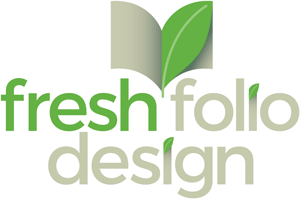Focus on your Subject
 When designing a brochure be clear on what its purpose is and stay focused on that. One of the worst things you can do is add too many ideas to one piece.
When designing a brochure be clear on what its purpose is and stay focused on that. One of the worst things you can do is add too many ideas to one piece.
An example of this from the past year was a brochure for a client promoting an upcoming event. In our original meeting we identified the need for a brochure to notify their audience that registration was open and directed them to the website to sign-up. (SIDENOTE: This is a great example of pairing the strengths of print and online)
In the process of routing the brochure, another in-house department wanted to add information about a new app they would be launching, while a third chimed in about promoting a podcast.
While each of those items had value, tacking them on to this brochure had the potential of either confusing the recipients about the original message or losing their interest entirely.
It should never be the job of a brochure to communicate everything going on at a company
That kind of old-school thinking is what kills the effectiveness of many brochures. As a result, some people end up thinking brochures are a waste and aren’t effective.
In reality, when you are clear on your message and the purpose of the brochure, it can be a very effective way to communicate.
It Never Hurts To Ask
 Another misstep that I have seen in brochure design is forgetting to include a call-to-action. Strong brochures need to have a purpose and ultimately that purpose is to influence the audience to do something.
Another misstep that I have seen in brochure design is forgetting to include a call-to-action. Strong brochures need to have a purpose and ultimately that purpose is to influence the audience to do something.
Maybe it is to buy a product or donate to a cause. Or possibly to attend an event or become involved in an organization.
However, if your brochure sets up the message but does not make a clear call-to-action (CTA) you are missing an opportunity to close the loop, potentially frustrating your audience.
An exception to this would be a brochure where the purpose is entirely informative. For example, an annual report updating the audience on company status and possibly projecting the direction for the next year.
However, even in an informative brochure, there can be value to directing the reader to additional resources to keep them engaged on the topic.
One reason for a lack of CTAs could be that “sales” can be uncomfortable to some people. However, let’s distinguish between “sales” and “sale-sy”. Sales are what your business needs in order to keep it’s doors open, sale-sy is approaching sales in a way that is manipulative, heavy-handed, or counterproductive to building a relationship with the customer.
You can do “sales” without being “sale-sy”
When you are putting together a brochure think about the journey that you want to take your audience on. Brochures that are created with the readers’ experience in mind, are far more likely to be engaging and result in them not only wanting to take the next step, but actively seeking the CTA.
Houston, We Have a Problem
 Our final word of caution is knowing when it’s time to bring in a professional. Advances in technology have opened the door for people to create more on their own. It is now possible for someone to shoot their own video, set-up simple websites, or create graphics with virtually no experience whatsoever.
Our final word of caution is knowing when it’s time to bring in a professional. Advances in technology have opened the door for people to create more on their own. It is now possible for someone to shoot their own video, set-up simple websites, or create graphics with virtually no experience whatsoever.
However, if you are not evaluating the needs for a particular project, you may be attempting to tackle something that is beyond your ability.
Having access to programs like Photoshop and InDesign is not the same thing as knowing how to design. In the same way that having a wrench does not make me a plumber.
Of course, not every project requires a professional. Simple flyers, handouts, and even certain newsletters can be a great way to utilize graphics programs that you have access to.
Bring in a professional designer when you have a problem to solve
This past year we were hired to redesign a brochure that had been created by someone with very little design experience. Our client told us that they hadn’t received the response they were hoping for with the brochure — all it took was one look for us to see why.
There was no hierarchy to the design, the graphics were not relevant to the content, and the use of fonts was distracting.
We were able to work with the existing copy to create a visually engaging brochure that communicated our client’s message much more clearly and, as a result, increased member participation.
The next time you have content and are wondering if you need a designer or if it’s something you can take care of on your own, ask yourself this question: Do I have a problem to solve?
If the answer is “Nope, I know exactly what is needed,” then hop to it and layout what you need. But if the answer is, “Yeah, I’m not sure what to do with this content,” then it sounds like a job for a professional designer.
If we can be of any assistance as you evaluate your design needs, please don’t hesitate to contact us. And from all of us at Fresh Folio Design, we wish you a happy and prosperous 2018!




Leave a Reply